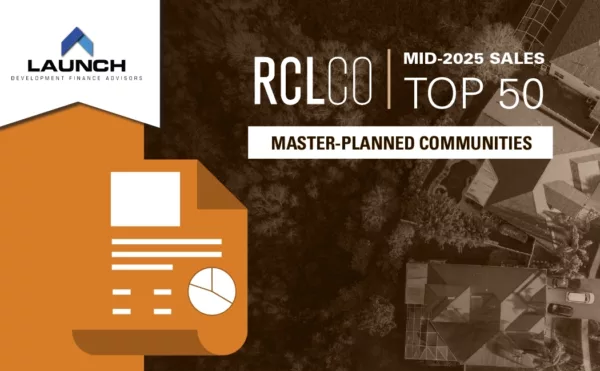
November 14, 2024
Many small- and mid-sized real estate companies in business today were formed by Baby Boomers. A large portion of these owners and leaders are now approaching retirement without a concrete or viable plan on how their businesses will continue on after they step back. So, what are these companies to do?
The statistics on companies surviving the transition of ownership and/or leadership in the U.S. are daunting. Back in the 1920s, the average lifespan of S&P 500 companies was 67 years. This dropped to only 21 years in 2020 and continues to decline. Research conducted by the Family Business Alliance indicates that just over 30% of family-owned businesses make the transition into the second generation, with only 12% viable by the third generation, and only 3% by the fourth generation and beyond.
While there are many factors that contribute to these rather bleak statistics regarding company longevity, including M&A activity and the accelerating pace of technology and creative destruction, in our experience the lack of clear and effective succession planning is one of the major contributors to why real estate companies, and particularly multi-generational family real estate concerns, do not stand the test of time.
While most public REITs have good discipline around formal/proactive succession plans, many private real estate companies are ill-prepared for the threat that retirement poses to their continued survival. In our experience, most small- and mid-sized real estate companies have no formal succession plan in place for key team members, and few have afforded themselves the time necessary to effectively groom internal company succession candidates or recover from a misfire if first attempt at replacing a key executive fails.
Read Other Published Variations of This Article
Looking Inside or Outside
It’s great, in theory, to think about succession planning as the “grooming” of an existing team member to take over a more senior-level role. However, the execution of a thoughtful, proactive succession plan from within is a serious challenge for the typical small- or mid-sized real estate company. It may be difficult, if not impossible, to afford a “bench” of potential leaders-in-training. Faced with these constraints, companies are forced to wrestle with trading-off the pros and cons of deliberate internal preparation of potential successors vs. bringing in someone new from the outside. And even when a company thinks it has a viable internal successor, often that individual grows impatient waiting for his or her chance at the reins of the company and departs to make their mark elsewhere, forcing the company to either look to the outside or start the process anew. And oftentimes, they don’t have a choice when the departing team member leaves unexpectedly without substantial notice.
While an external search may be the right, or only, alternative facing a company with a looming vacancy, there are a number of important considerations that must be made to handle this process effectively and sensitively, including:
- Culture – Small- and mid-sized companies often have a unique and strong culture in which team members have formed close working relationships, and roles and responsibilities have evolved over time to reflect the various personalities, skillsets, and blind spots. Any outside hire will need to be thoroughly vetted not simply for experience, technical skills, and capabilities, but also for fit with the company’s purpose, culture, and team dynamics.
- Communication – Inertia and fear of change are normal human tendencies, making it all the more important to keep transparent and open lines of communication with existing and potential new team members. This will be necessary to keep the entire team engaged in their work, positive in their attitudes, and trusting that the decision makers will select someone who doesn’t upset the apple cart.
- Buy-in – It is also critical to ensure that any potential new leader coming in from the outside has the support of leadership and ownership and will gain the buy-in from the internal team. It would not be unusual for members of the existing team to feel slighted that they were not selected as the logical successor, and the best way to overcome this is to identify an indisputable new leader who clearly brings more or deeper experience than the team has today. It is important to be clear-eyed about the potential risk of undesirable turnover that could result from those who feel passed over or who don’t understand the value that the new hire brings.
Walk the Walk
When it comes to planned retirements, we often see that outgoing leaders are unwilling, or unable, to fully walk away from their responsibilities when a new hire is made. This is understandably an emotional time for the departing leader and challenging for the successor who feels the need to demonstrate that they are now the decision-maker. A departing leader must look themselves in the mirror and be convinced that they are, in fact, able to let go and delegate responsibility. Even when the sentiment to step back is genuine, following through and demonstrating good behavior can still be a challenge.
An industrial company in the Pacific Northwest experienced this dilemma. The founding partner, let’s call her Susan, had been saying for years that she wanted to be less involved in the day-to-day operations of the business and was ready to hand the reins of the company to her adult son. The son, let’s call him Clyde, had had a very successful career first on Wall Street and then at another private real estate company prior to joining the company, and was appointed as President while his mother ascended to Chairman. Despite public announcements both internally and externally regarding the succession, Susan continued to “meddle” in company decisions, both large and small, including inspecting properties, firing on-site personnel, and engaging in back-channel conversations with staff that had previously reported directly to her, without including Clyde in said conversations and decisions. Clyde felt undermined and resentful that his mom was not in fact stepping back, but worse, creating confusion among the valued team who were unsure who was in charge. Morale was low, there was a surge of undesirable turnover, and the company gained a reputation in the marketplace as being dysfunctional. RCLCO was in the midst of designing a strategic plan for the firm, but things got so bad that we called a halt to the effort and told Susan and Clyde that the interpersonal issues and clarity regarding roles and responsibilities must first be resolved. What followed was an intensive sidebar effort to do just that, resulting in a “family constitution” that clearly spelled out roles, reporting lines, and decision-making authority for the Chairman and the President. It took some time for Susan to finally embrace her new role and its limits for the good of the company, but soon after ratifying the constitution, the company was able to function and in fact put itself on an aggressive growth path under Clyde’s clear mandate. Susan is still the Chairman and main GP co-investor for the company, and she is happily not involved in the day-to-day minutia of running the company.
Implications of Not Planning
Proactive succession planning is difficult and takes time, but the consequences of not having an “emergency” succession plan in place can be devastating. Emergency or contingency succession plans are the ones designed to deal with unexpected turnover, such as a manager’s sudden disability, death, or departure to work for another firm. While many companies have drafted legal prescriptions on what happens to ownership or partnership stakes in a company, they tend to fall short in delineating a clear line of leadership succession and who and how critical business decisions will be made in the absence of the owner/managing member.
A terrible, but instructive, example is a private family-owned real estate company in the Midwest whose CEO passed away suddenly in an accident with no instructions or rules of engagement left behind to guide key decisions and the stewardship of the company and its portfolio. In the wake of its tragic loss, the company had a string of “interim” non-family presidents who were not aligned with the wishes of the family stakeholders, and worse, were more interested in lining their own pockets than moving the company forward. The CEO’s spouse, who was not an experienced real estate executive, reluctantly stepped in after several years and began to right the ship that had lost its course, but this company lost five to seven years of what should have been productive growth in the last cycle.
Another example of failing to plan adequately is a private real estate company that owned and operated over 50 self-storage facilities up and down the East Coast. The company’s fourth-generation family CEO realized that nearly his entire executive team was on the cusp of retirement sometime in the next one to three years. The CEO came late to the realization that he needed to figure out how to attract the next generation of leaders, and quickly, to ensure that the company would continue to thrive into the future, and he hired RCLCO to facilitate a strategic planning exercise to chart the future direction of the company. At the first planning session, RCLCO was deliberately provocative, declaring that the company was facing an existential threat to its existence and was had one of two decisions: the CEO could double down, hire a whole new executive team, and commit to putting the company back on a growth trajectory, or he should convince the family stakeholders to sell the business while the market was hot. Aghast at the suggestion of selling the company that his grandfather started from scratch, the CEO dutifully worked through the details of a strategic plan that was necessary for the survival of the firm for the next 50 years. However, upon completion of the plan and the realization that he would have to commit to working 80-hour weeks for the next three to five years to put the company back on a sustainable path, the CEO decided upon reflection to sell the company, as this was in both his and the family’s best interests. While the outcome was ultimately quite positive for the CEO and the family, it was a fallback position made necessary by the lack of adequate succession planning.
Final Thoughts
With plenty of examples of how the unprepared can find themselves both flatfooted and financially disadvantaged, it clearly is of value to prepare one’s company for succession. It does not solely benefit the owner(s) but offers a sense of stability and confidence to the entire team. With the massive wave of Boomers facing retirement in the next few years, this practice is now necessary more than ever.










